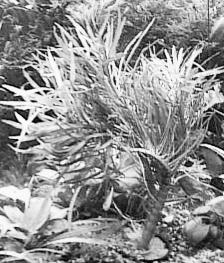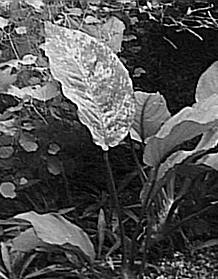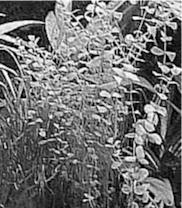
Well, this is it, the month where we ask you the membership to dig down in your pockets and come to the annual auction. This is the single event where we finance most of the club for the coming year. There will be the usual assortment of strange used and new items from national manufacturers, local stores and of course you, the membership. At time of writing, we’ve already confirmed a new 80-gallon tank and stand! Feel free to invite friends; like all our meetings, the auction is open to all.
If you didn’t make it to last month’s meeting, you missed a
treat. Heather Candelaria presented her first talk ever, on Goldfish
(not Koi). Amongst the comments I’ve heard were better than a lot
of professional speakers I’ve heard!
The talk will be available on
videotape for checkout from the library if you are interested. Heather
starting a goldfish club with a first meeting on April 7. Contact her
at Crystal Aquarium (see the ad for phone number). Thanks Heather!
I haven’t gotten a chance to digress from the usual cavalcade of
thank-you’s and announcements for a while, so we’re about due for
one. If you’ve been following the plant availability in local stores
for the last couple months, you may have noticed a variety of unusual
species. I personally like to make it a point to buy any and all of
these at least once.

The most interesting of these plants is definitely Eusteralis stellata. This bushy pink-yellow plant has long skinny leaves, a bit like Rotala indica. It is native to Australia and Asia, and requires very high light, fertilizer and carbon dioxide.
We’ve also spotted two species of Nesea, an undescribed red
one, and N. pedicillazta. Both share leaf characteristics of Rotala
and Ammania, delicate stems and leaves. The red variety is a very deep
color, so I’m guessing it also needs high light.

One of the major area wholesalers now has the variegated Anubias
barteri, a plant I’ve been looking for quite some time. I’d seen this
in the Oriental Aquarium catalog from Singapore and wondered if it was
even a real plant (vs. a normal Anubias splattered with bleach). It’s
real alright. It looks just like normal A. barteri, except with subtle
light marbling
in the leaves, similar to the Marble Queen
radican sword. This plant might be a bit pricey, so you might have to
ask the store to order it for you special.
Also appearing has been a potted narrow-leaf Hygrophila, usually
labeled H. lacustris. I’ve been growing this, or a similar
species, from cuttings I bought about six months ago from a store in
White Center (that ought to narrow it down a bit). I learned that
these were actually hobbyist-grown cuttings. Growing conditions are
similar to the usual Giant Hygro
types, and growth has been
faster. This is a neat background stem plant!
One plant that was very unusual a few years ago is Mexican Oak
Leaf
or Shinnersia rivularis. It seems to surface now and then,
and it’s here now. I’ve used it as a step up
from good old
green hygro, when it’s been growing too fast. Mexican Oak Leaf has
similar leaf placement, and the leaves are prettier. I have, however,
seen this plant utterly fall apart when not given enough light or
nutrients.

Kathy and I were in Texas a few weeks back, and found two other new plants that we brought back with us. Hopefully, we’ll have cuttings soon. The first of these plants was Micranthemum umbrosum, something sure to please fans of Amano’s small garden tanks. M. umbrosum is similar in stem size to its cousin M. micranthemoides, but has larger, rounder leaves. Hopefully, it is not as invasive as its cousin as well. In any case, it’s yet another tiny plant.
The other specimen we brought back was a few stems of Eichhornia
diversifolia. I’m guessing it needs a lot of light and fertilization,
because the stems were almost dead at the store. We’re trying to nurse
them back into growing, and it’s sort of working. This plant looks a
little like Heteranthera zosteraefolia, Stargrass
.
In the category of plant accessories,
the long-anticipated
wait for Siamese Algae Eaters is finally over. You should be able to
find these little gems in almost every store right now. SAE’s,
or more accurately Crossocheilus siamensis, is an unusual algae-eating
fish, in that it is capable of munching on red brush algae, that
tenacious tufty hell that can choke the life out a good planted
tank. The wholesalers finally seem to be catching on to the demand for
them in the US (they have been available in Europe for years). You
might want to get them soon, there is a rumor that these fish are
seasonal and may disappear until next year!
One purely unsubstantiated rumor is that some stores will soon be
chock-full of the magic
shrimp used by Amano in his famous
Nature Aquariums. Hitherto only seen in Japan, they are rumored to
munch on any number of algaes. At this point, there is not a lot of
information about the shrimp, and they’re gonna be pretty pricey, so
if you are lucky enough to try some, take lots of notes!
Dennerle Nature Aquaristic, System for a Problem-free Aquarium, 1990.
Takashi Amano, Nature Aquarium World, TFH 1995.